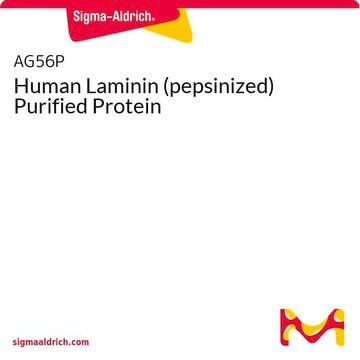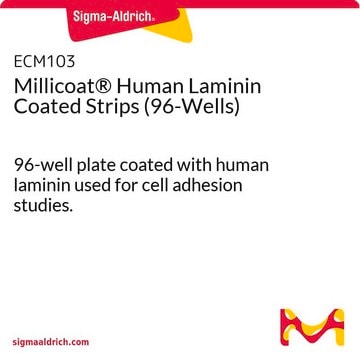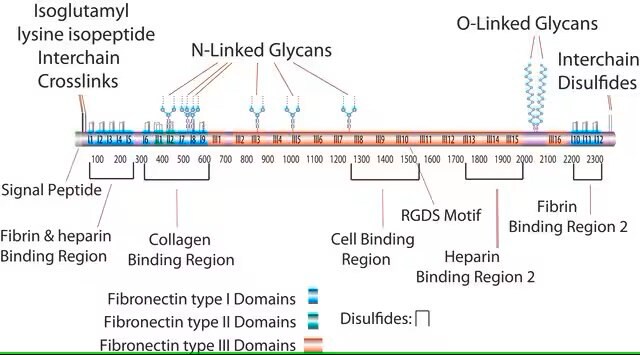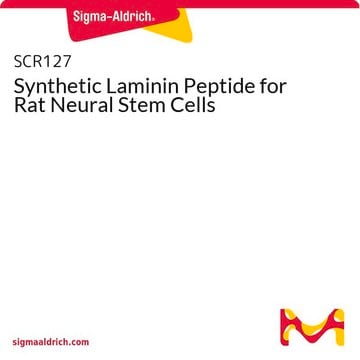It is Laminin-1.
L4544
Human Laminin
from human fibroblasts, cell culture derived, liquid, 0.5 mg/mL, suitable for cell culture
About This Item
Productos recomendados
Nombre del producto
Laminin from human fibroblasts, cell culture derived, liquid, sterile-filtered
origen biológico
human fibroblasts
Nivel de calidad
esterilidad
sterile-filtered
Formulario
liquid
envase
pkg of 100 μL
técnicas
cell culture | mammalian: suitable
cobertura de la superficie
1‑2 μg/cm2
Nº de acceso UniProt
Especificidad de unión
Peptide Source: Collagen
Condiciones de envío
dry ice
temp. de almacenamiento
−70°C
Información sobre el gen
human ... LAMB1(3912)
Aplicación
- in coating six-well plates for wound healing assay[1]
- as a substrate in cell adhesion and spreading assay[2]
- for differentiation of human embryonic stem cells (hESCs) and human induced pluripotent stem cells (hiPSCs) toward dopaminergic neurons[3]
- in corneal endothelial cell wound healing (migration) assay and corneal endothelial cell barrier assay[4]
Laminin from human fibroblasts is recommended for use as a cell culture substratum at 1-2 μg/cm2. The optimal concentration does depend on cell type as well as the application or research objectives.
Acciones bioquímicas o fisiológicas
Componentes
Precaución
Nota de preparación
Código de clase de almacenamiento
10 - Combustible liquids
Clase de riesgo para el agua (WGK)
WGK 2
Punto de inflamabilidad (°F)
Not applicable
Punto de inflamabilidad (°C)
Not applicable
Elija entre una de las versiones más recientes:
¿Ya tiene este producto?
Encuentre la documentación para los productos que ha comprado recientemente en la Biblioteca de documentos.
Los clientes también vieron
Artículos
The extracellular matrix (ECM) and its attachment factor components are discussed in this article in relation to their function in structural biology and their availability for in vitro applications.
The extracellular matrix (ECM) is secreted by cells and surrounds them in tissues.
Protocolos
Coating surfaces with laminin for culturing cells requires specific conditions for optimal results. Protocols for coating coverslips to culture neurospheres and general cell culture are included.
-
Hi! Do you know what is the predominant laminin isoform in the preparation? Thank you!
1 answer-
Helpful?
-
Active Filters
Nuestro equipo de científicos tiene experiencia en todas las áreas de investigación: Ciencias de la vida, Ciencia de los materiales, Síntesis química, Cromatografía, Analítica y muchas otras.
Póngase en contacto con el Servicio técnico









